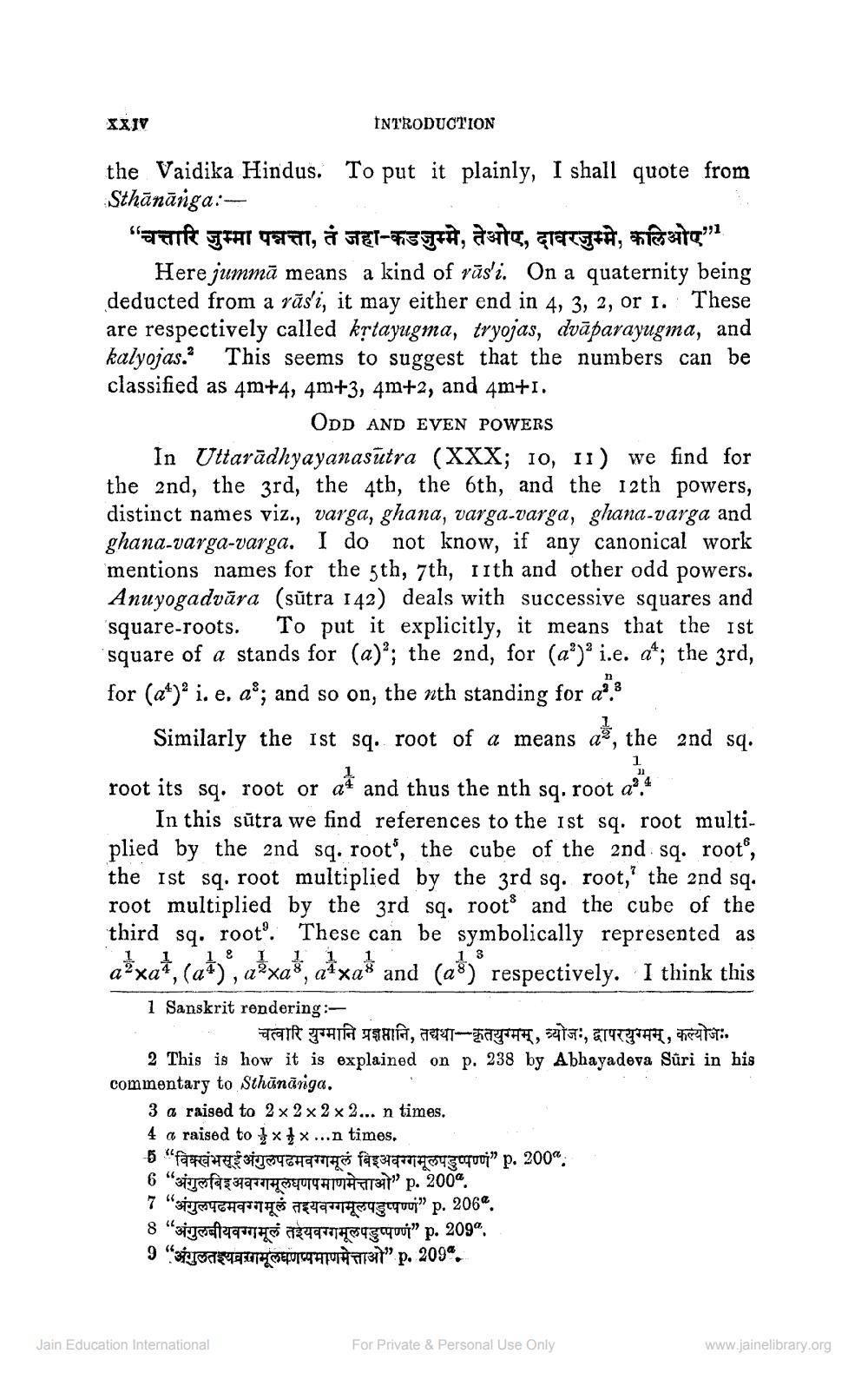________________
XXIV
INTRODUCTION
the Vaidika Hindus. To put it plainly, I shall quote from Sthānānga:"TUR IFAT TETI, JET-FETA, aste, gracEFA, FIRAT'1
Here jummā means a kind of rās'i. On a quaternity being deducted from a răs'i, it may either end in 4, 3, 2, or 1. These are respectively called kştayugma, tryojas, dvāparayugma, and kalyojas. This seems to suggest that the numbers can be classified as 4m+4, 4m+3, 4m+2, and 4m+I.
ODD AND EVEN POWERS In Uttarādhyayanasūtra (XXX; 10, II) we find for the 2nd, the 3rd, the 4th, the 6th, and the 12th powers, distinct names viz., varga, ghana, varga-varga, ghana-varga and ghana-varga-varga. I do not know, if any canonical work mentions names for the 5th, 7th, 11th and other odd powers. Anuyogadvāra (sūtra 142) deals with successive squares and square-roots. To put it explicitly, it means that the ist square of a stands for (a)"; the 2nd, for (a®) i.e. a*; the 3rd, for (at)* i. e. a*; and so on, the nth standing for de
Similarly the ist sq. root of a means as, the 2nd sq. root its sq. root or at and thus the nth sq. root a24
In this sūtra we find references to the ist sq. root multiplied by the 2nd sq. root", the cube of the 2nd sq. root®, the ist sq. root multiplied by the 3rd sq. root,' the 2nd sq. root multiplied by the 3rd sq. roots and the cube of the third sq. root'. These can be symbolically represented as a xał, cał), atxas, ałxas and (03) respectively. I think this 1 Sanskrit rendering:
a git TAA ISAIR, 7941- 45, 54155, TUTT#, chiatti. 2 This is how it is explained on p. 238 by Abhayadeva Sûri in his commentary to Sthūnārga.
3 a raised to 2 x 2 x 2 x 2... n times. 4 a raised to 1 xfx...n times. 6 "fadagi STAY Hari faceam cugequoi” p. 200“. 6 "stofa31972|HEUTTAMATIT341" p. 2009. 7 "symycharitas negaragequuj" p. 2062. 8 "syneema 72493145aquoi" p. 209“. 9 S TATUEPUTETTU 17311" p. 209".
Jain Education International
For Private & Personal Use Only
www.jainelibrary.org




